Conditioning Protocols for Law Enforcement Officers
Strength and conditioning programs designed for law enforcement officers can overexert the conditioning in a workout. These men and women often carry a strong and “more is better” mindset that we love as coaches and is a requirement for their work, but it can be detrimental to their long-term training progress. If not programmed appropriately, the conditioning workload will catch up and lead to exercise burnout, potential injury, or, at a minimum, a lack of improvement.
Conditioning should be laid out with a plan and intention to improve upon. Coaches should have scalable conditioning protocols that allow for regulation to create better adherence to the sporadic schedule of an officer. Every workout doesn’t require complete exhaustion to be reached. Training should build well-rounded conditioning as opposed to a singular aspect such as HIIT or long-distance aerobic work. Utilizing various conditioning methods will ensure complete energy system development and keep training fresh and fun for the officers.
Some conditioning protocols that can be used to train law enforcement officers:
AMRAP:
As Many Rounds As Possible involves setting a time and performing a series of exercises for as many total rounds as possible before that time expires. AMRAPs can be performed within a large timeframe, 30 minutes, for example, with the intention of a steady work pace, or they can be performed in a shorter series of sprints, 6-8 minutes.
Example AMRAP series: 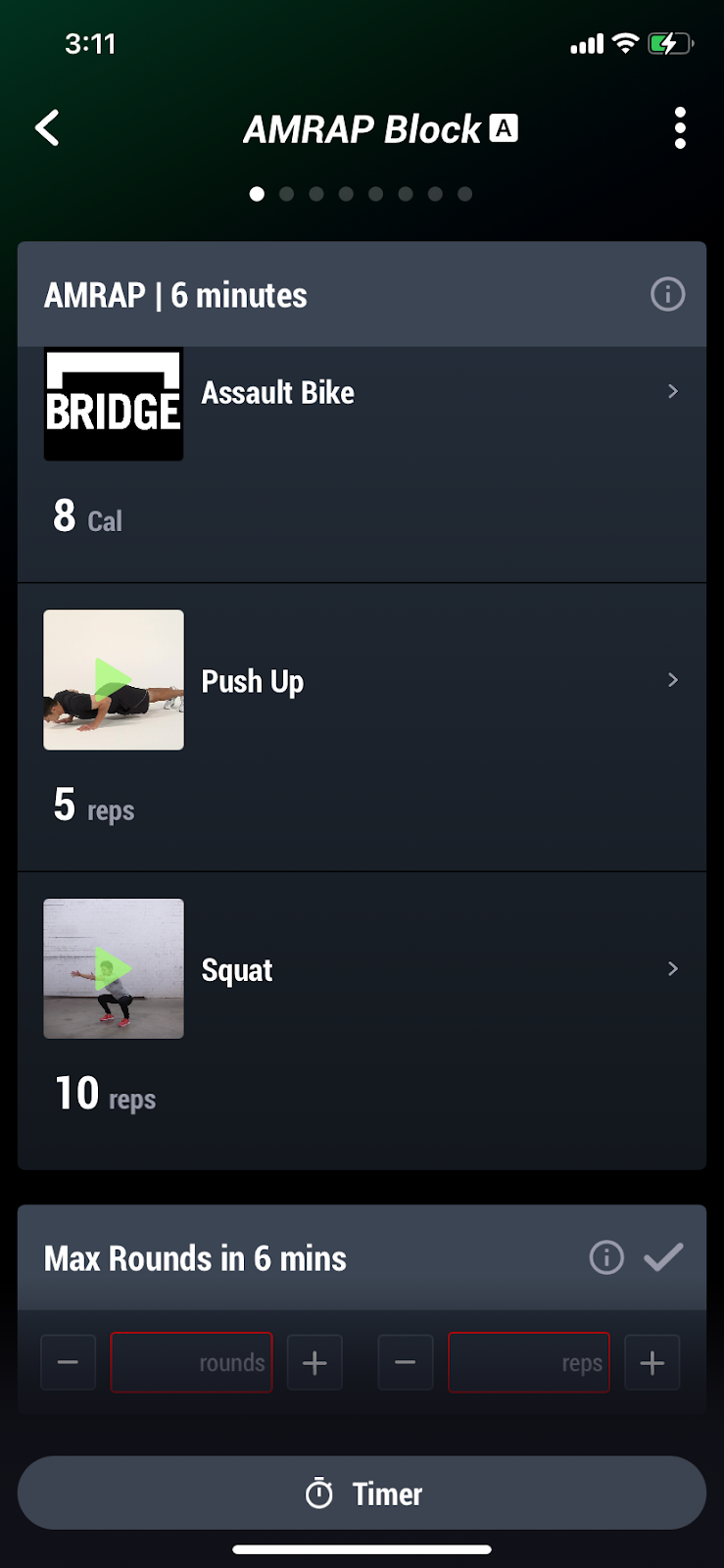
6:00 AMRAP :
Assault Bike x 8 calories
Push Ups x 5
Air Squats x 10
15:00 AMRAP:
Kettlebell Swing x 8
Stationary Bike x 250 meters
Inverted Rows x 12
Ski Ergometer x 150 meters
30:00 AMRAP:
Farmers Carry x 40 meters
Sled Drag x 40 meters
Front Rack Carry x 40 meters
Sled Push x 40 meters
Jog x 200 meters
EMOM:
Every Minute On the Minute is performed by starting a clock and completing an exercise at the start of every minute. Once the movement is completed for the prescribed work, the remaining time of that minute is used to rest. This is then repeated until the total time is finished.
EMOMs are typically performed between 10-30 minutes. Since the rest periods of the EMOM are potentially longer than many other protocols, they work well in training for strength and power capacity using major compound exercises.
Example EMOM series: 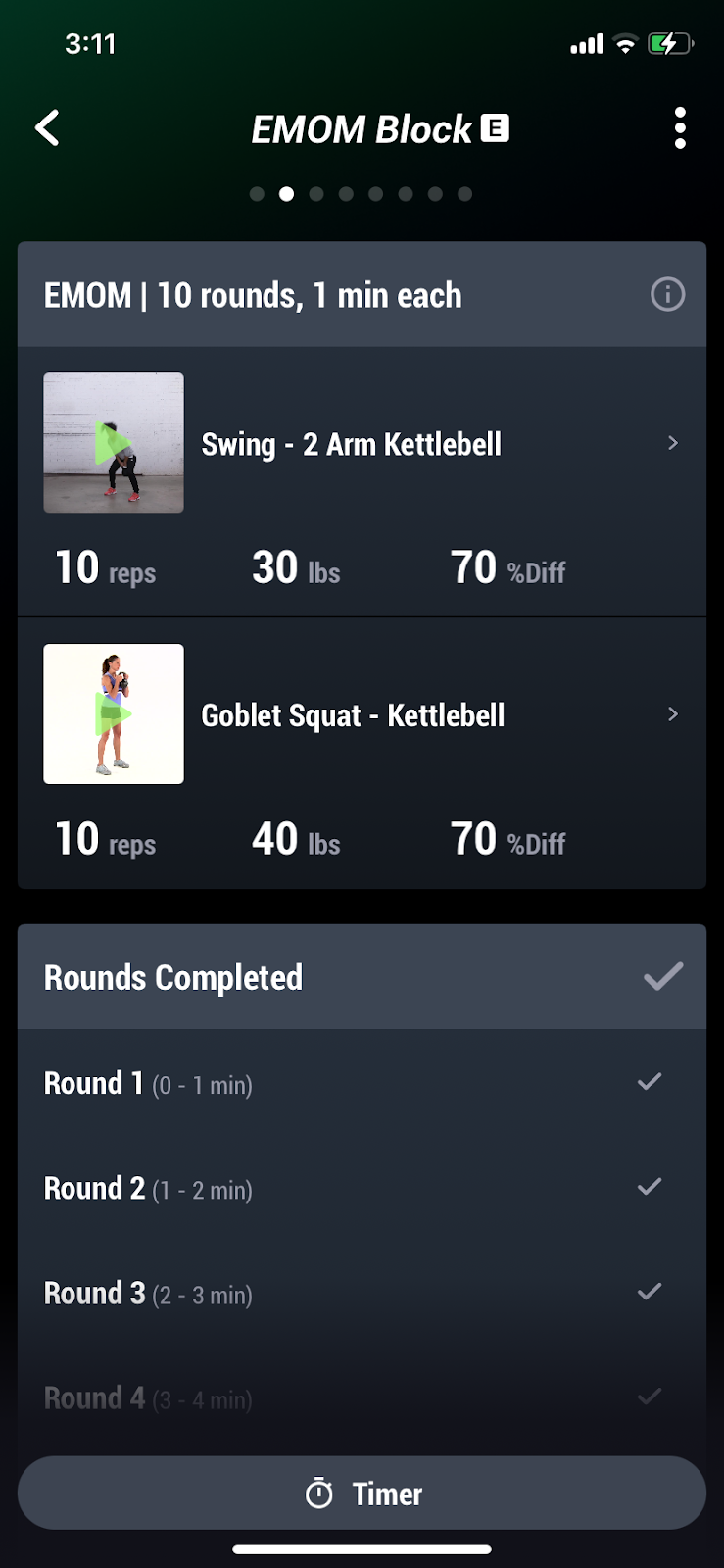
10 Minute EMOM:
Kettlebell Swing x 10
Kettlebell Squat x 10
12 Minute EMOM:
Trap Bar Deadlift x 1 @ 85% 1RM
20 Minute EMOM:
Pull Ups x 5
Row Ergometer - Sprint x :20 seconds
Step Ups x 4 each side.
Assault Bike – Sprint x :20 seconds
30 Minute EMOM:
Bike Erg x 8 calories
Suitcase Carry x 15 meters each side.
Dumbbell Squat to Press x 10
Bike Erg x 8 calories
Kettlebell Front Rack Carry x 30 meters
Medicine Ball Scoop Throw x 4 each side.
RFT:
Rounds for Time has the participant marking the time to complete a prescribed number of rounds. As opposed to working within a set time frame, this protocol finishes when the work is done.
When implemented into a program, countless exercise numbers and total rounds can be prescribed. A solid starting point would be an inverse relationship between the exercises and rounds. This means if you have several exercises listed, 5-10, perform a few rounds, 2-3, and vice versa.
Example RFT series: 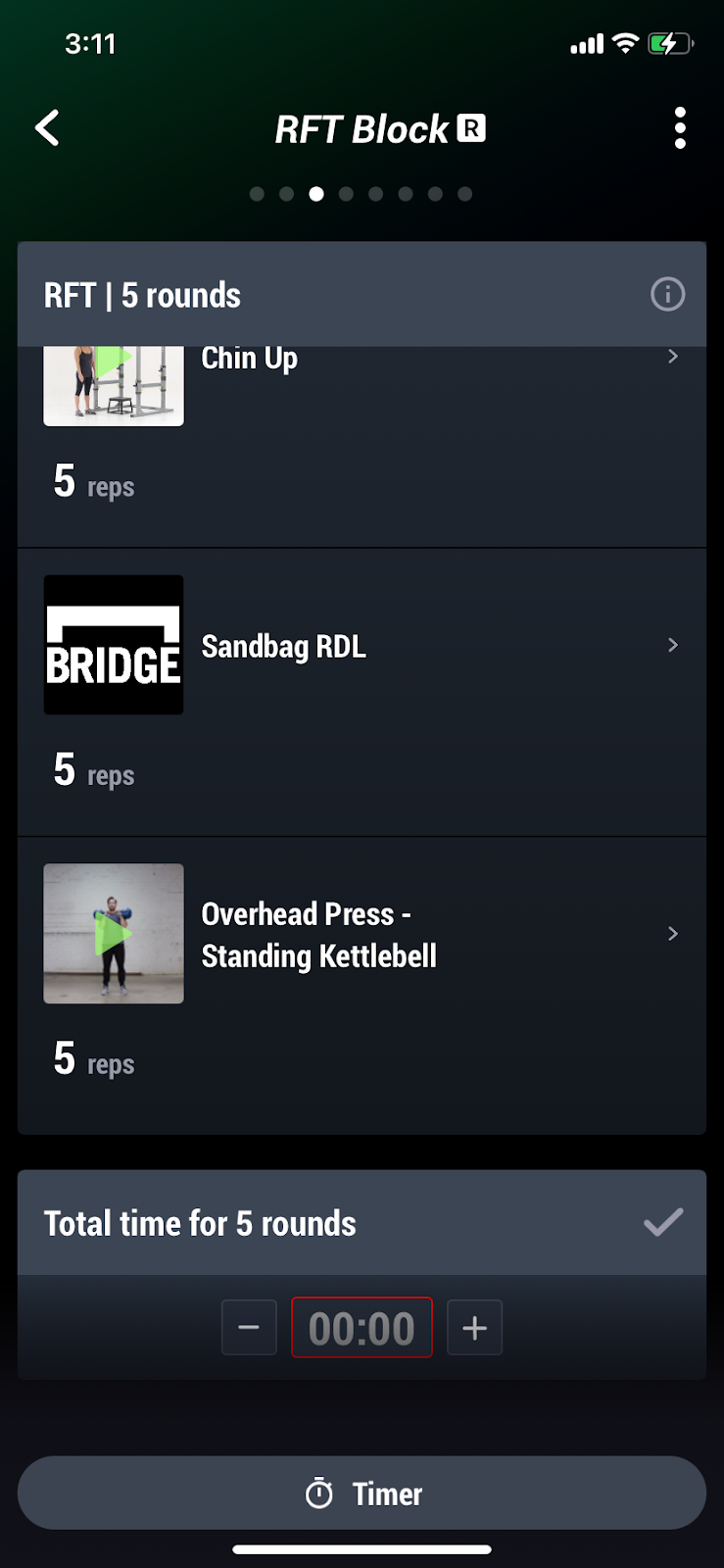
Perform 10 rounds for time:
Assault Bike x 10 calories
Push Ups x 10
Perform 5 rounds for time:
Sandbag Squat x 5
Chin Ups x 5
Sandbag RDL x 5
Kettlebell Overhead Press x 5
Perform 2 rounds for time:
Row Erg x 1,000 meters
Rope Rack Climb x 5
Ski Erg x 500 meters
Walking Lunges x 20 meters
Bike Erg x 2,000 meters
Sandbag Carry x 100 meters
TABATA:
Tabatas are a high-intensity interval series involving 20-second work periods followed by 10-second rest periods, repeated for a prescribed set count. While simple, they are a great way to incorporate high-intensity training into a program and require little equipment.
Considering that the rest time will be sparse, utilizing exercises that require little setup or equipment is recommended for the flow to be as efficient as possible.
Select 4 exercises to perform in the total series for 6-8 rounds. You can perform one exercise at a time or rotate like a traditional circuit, but be mindful of only having a 10-second buffer to start the next exercise.
If needed, prescribe additional rest, 30-60 seconds between rounds or exercises. If not, just continue rolling through the series.
Example Tabata’s:
Example 1: 8 rounds x :20 / :10, no rest between rounds.
Jump rope
Hand Release Pushups
Skater Jumps
Front Plank Hold
Example 2: 6 rounds x :20 / :10, :30 seconds between rounds.
Air Squats
Plank – Knee to Elbow
Bodyweight Reverse Lunges
Jumping Jacks
TIMED CIRCUITS:
Timed circuit training is typically the first consideration that comes to mind when considering conditioning methods, and for good reason. When implemented appropriately, they can serve great in large group settings or be useful in time-limited situations. Performing circuits off the clock allows coaches to program the specific training goals and make better exercise selections for that series.
Example timed circuits: 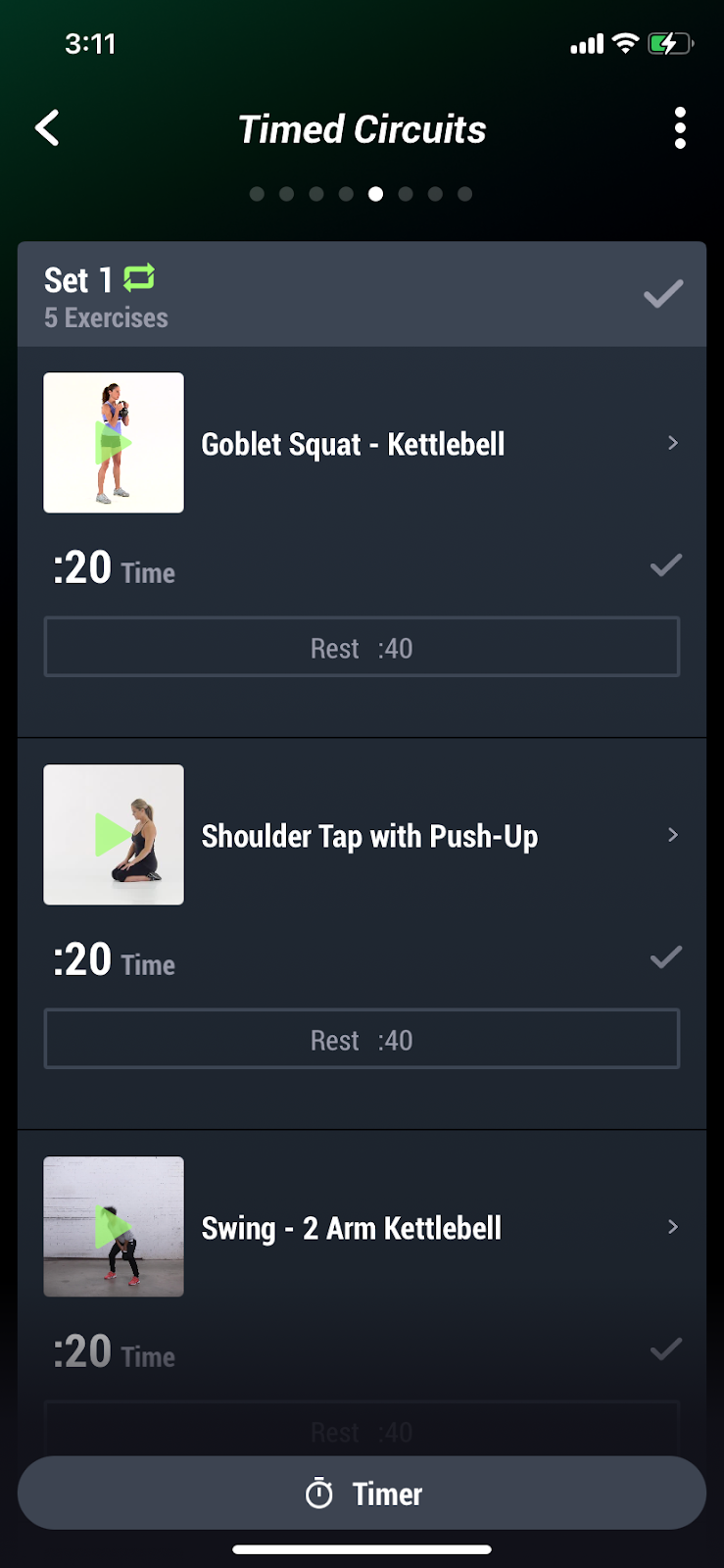
Example 1: :20 work / :40 rest x 4 rounds
Goblet Squats
Push Up plus Shoulder Tap
Kettlebell Swings
Rolling Side Planks
TRX I,Y,T Raises
Example 2: :30 work / :30 rest x 5 rounds
Sandbag Shouldering
Medicine Ball Rotational Slams
Kettlebell Plank Pull through
Squat Jumps
COMPLEXES:
A complex performs a series of back-to-back exercises with the same implement without resting until full competition. Often performed with dumbbells, barbells, or kettlebells, a complex is great for building strength or power endurance.
Since complexes typically incorporate technical strength training exercises in a fatigued state, coaches should stress the importance of focusing on exercise technique and weight selection.
Example training complexes: 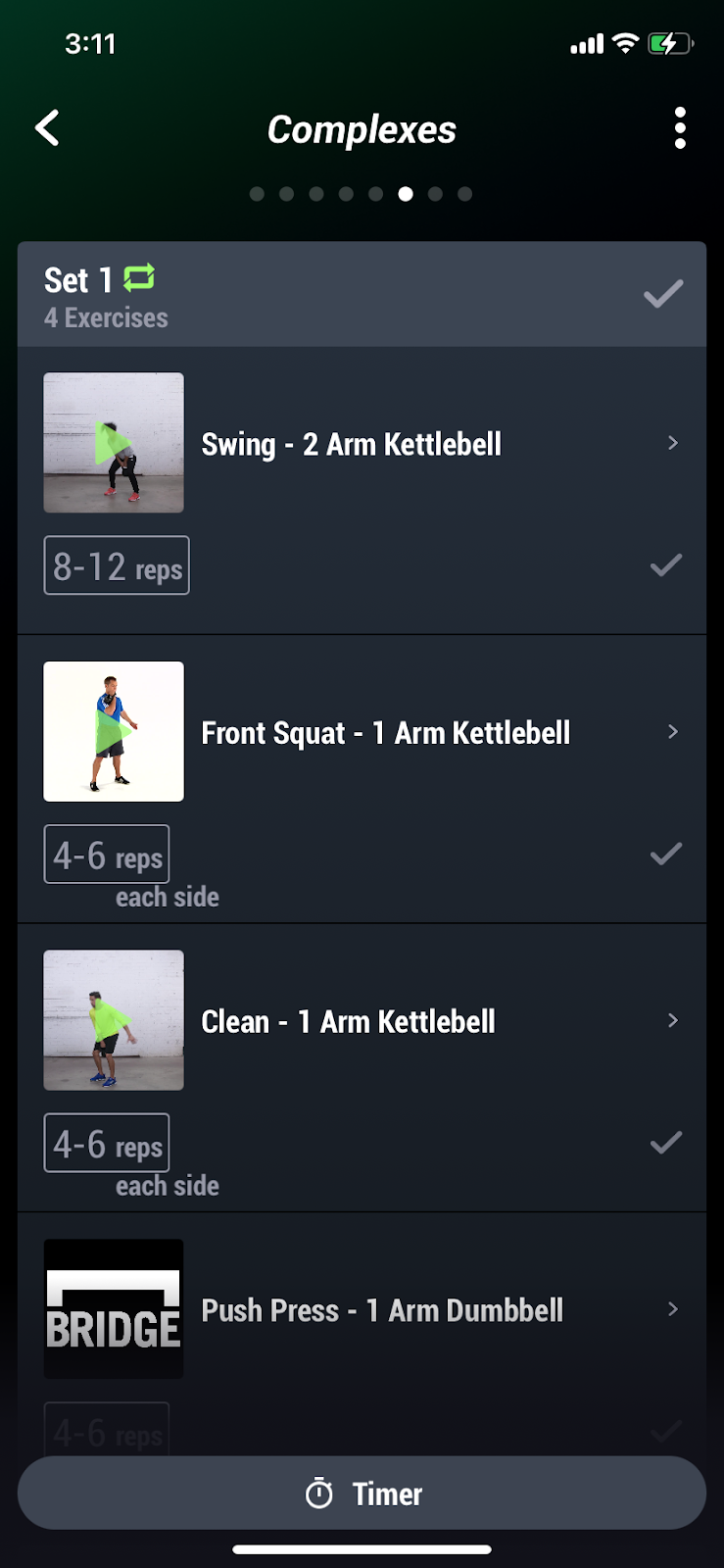
Barbell or Fat Bar Complex: 3-5x
RDL x 3-8
Power Shrug x 3-8
Front Squat x 3-8
Push Press x 3-8
Kettlebell Complex: 3-5x
Kettlebell Swing x8-12
Kettlebell 1 Arm Front Squat x 4-6 each side.
Kettlebell 1 Arm Clean x 4-6 each side.
Kettlebell 1 Arm Push Press x 4-6 each side.
AEROBIC CONDITIONING:
While it may not be as exciting as some high-intensity options, including aerobic conditioning through longer steady-state cardio, is necessary for long-term health benefits. Especially considering that police officers are more exposed to cardiovascular disease and stress over longer periods, it’s critical to attempt to mitigate this by boosting cardiovascular health.
That said, it is not recommended that officers just go out and start running abruptly. There is nothing wrong with running, but if you need lower impact options, use of the row, bike, ski ergometers, stair climber, or assault bike can all be more suitable options if available.
Another training option to consider is breaking up the modalities throughout the period for the sake of sanity, so instead of performing 60 minutes on the treadmill, you could perform the following with no rest in between.
Examples of aerobic conditioning:
15 minutes Row Ergometer
15 minutes Sled Push – Farmers Carry 40 meters
15 minutes Bike Ergometer
15 minutes Treadmill Jog
Officers need to incorporate conditioning into their workouts. Following the protocols listed will offer sound, reasonable options. Placing 2 to 3 each week can greatly improve an officer’s abilities. It’s also important to note that many examples listed can all be used with interchangeable exercises to better accommodate a coach or officer's situation and setting.
About the Author

Brandon Holder, BS, CSCS, USAW, serves as the Strength & Conditioning Coordinator at the Fairfax County Police Department. With over 1,000 officers to train and a vast geographical area to cover, Brandon has successfully leveraged BridgeAthletic to address the unique fitness needs of the department's officers, ensuring they are well-prepared for their roles in law enforcement.
Related Posts

Exploring the Benefits of Retro-Walking...
Retro-walking (RW), or walking backward, is a therapeutic exercise used in resistance training...

A Preparatory Training Approach To...
Rucking and load support in full kit is an activity that many Tactical Human Performance teams will...

Conditioning Protocols for Law...
Strength and conditioning programs designed for law enforcement officers can overexert the...

![Blog CTA Med.[button] - Data Driven tools](https://blog.bridgeathletic.com/hs-fs/hubfs/Blog%20CTA%20Med.%5Bbutton%5D%20-%20Data%20Driven%20tools.png?width=863&height=397&name=Blog%20CTA%20Med.%5Bbutton%5D%20-%20Data%20Driven%20tools.png)
![Blog CTA Med.[button] - tactical - optimize](https://blog.bridgeathletic.com/hs-fs/hubfs/Blog%20CTA%20Med.%5Bbutton%5D%20-%20tactical%20-%20optimize.png?width=1240&height=570&name=Blog%20CTA%20Med.%5Bbutton%5D%20-%20tactical%20-%20optimize.png)